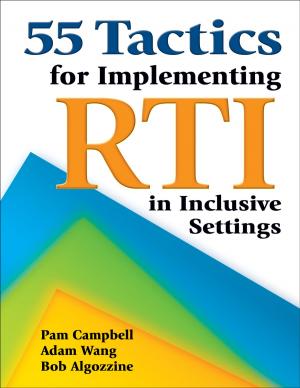How to Use Value-Added Analysis to Improve Student Learning
A Field Guide for School and District Leaders
Nonfiction, Reference & Language, Education & Teaching, Educational Theory, Educational Reform, Administration| Author: | Kate Kennedy, Mary Peters, James M. Thomas | ISBN: | 9781452269450 |
| Publisher: | SAGE Publications | Publication: | November 30, 2011 |
| Imprint: | Corwin | Language: | English |
| Author: | Kate Kennedy, Mary Peters, James M. Thomas |
| ISBN: | 9781452269450 |
| Publisher: | SAGE Publications |
| Publication: | November 30, 2011 |
| Imprint: | Corwin |
| Language: | English |
A step-by-step guide to transforming student learning with value-added analysis
Value-added analysis is the most robust, statistically significant method available for helping educators quantify student progress over time. This bookprovides a field-tested continuous improvement model for using value-added information to increase student learning in both the classroom and schoolwide. The five-step processshows how to:
- Create the conditions for success
- Examine district, school, and classroom reports to assess strengths and challenges
- Use these reports to create an improvement plan
- Implement instructional changes
- Evaluate and adjust the changes as the new school year starts
A step-by-step guide to transforming student learning with value-added analysis
Value-added analysis is the most robust, statistically significant method available for helping educators quantify student progress over time. This bookprovides a field-tested continuous improvement model for using value-added information to increase student learning in both the classroom and schoolwide. The five-step processshows how to:
- Create the conditions for success
- Examine district, school, and classroom reports to assess strengths and challenges
- Use these reports to create an improvement plan
- Implement instructional changes
- Evaluate and adjust the changes as the new school year starts















